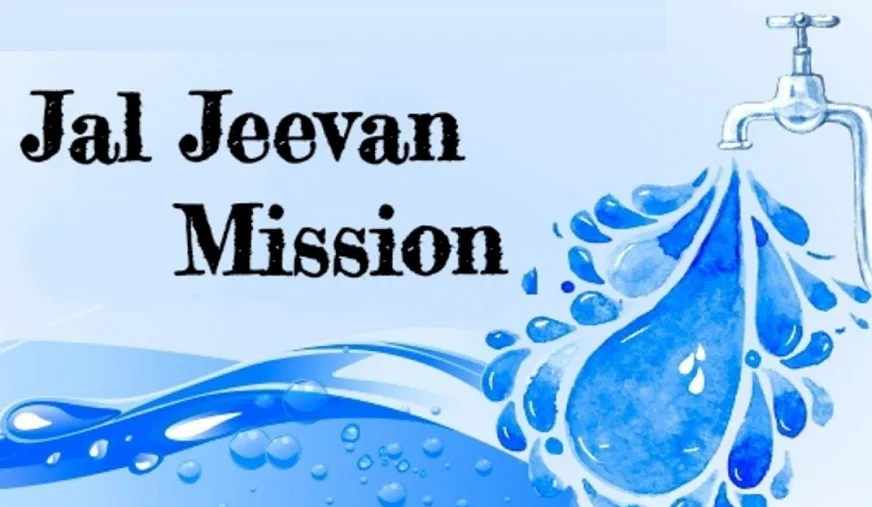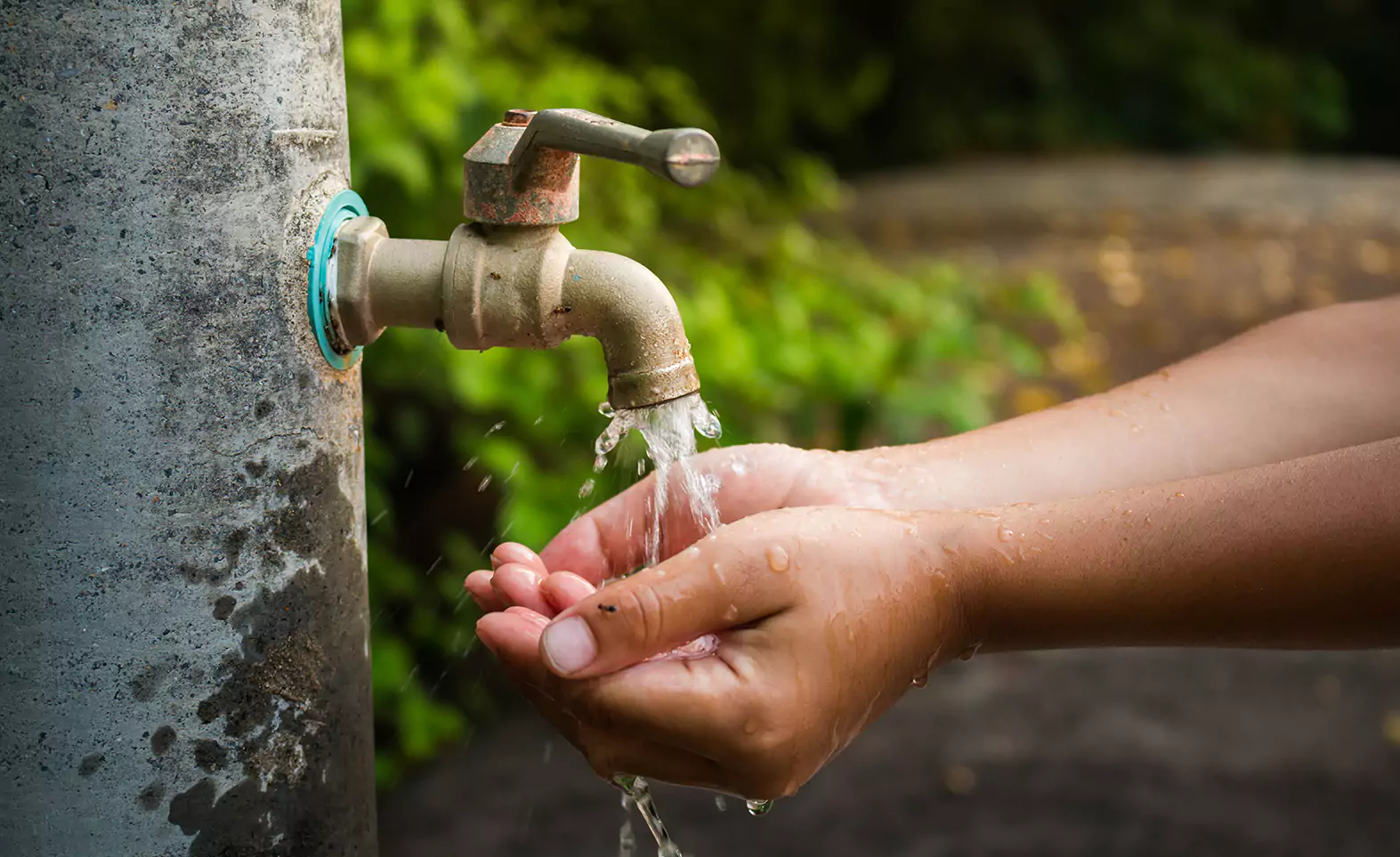India’s Water Crisis & Jal Jeevan Mission Progress
Water Security Concerns, Rural Piped Water Targets, and Sustainable Management
Water scarcity is one of the most pressing issues in India, impacting agriculture, industries, and public health. The Jal Jeevan Mission (JJM), launched in 2019, aims to provide universal tap water coverage to all rural households by 2024, bridging gaps in water accessibility and improving rural living standards.
- India’s Water Crisis: Current Status & Major Challenges
- Jal Jeevan Mission: Goals, Progress & Implementation
- Financial & Infrastructure Developments Under JJM
- Impact of JJM on Health, Employment & Rural Economy
- Challenges in Implementation & Water Security Concerns
- Future Roadmap: Policy Reforms & Sustainable Water Management
India’s Water Crisis: Current Status & Major Challenges
India’s Water Demand vs. Availability
| Parameter | Statistics | Source |
|---|---|---|
| Annual Water Demand | 1,123 billion cubic meters (bcm) | NITI Aayog |
| Projected Water Availability (2030) | 700 bcm (Deficit of 40%) | Central Water Commission |
| Households Facing Water Scarcity | 60% of Indian districts | Jal Shakti Ministry |
| Annual Per Capita Water Availability | 1,486 cubic meters (2024) | CGWB |
- Over 600 million Indians face extreme water stress due to declining groundwater and over-extraction.
- India’s per capita water availability has declined from 5,177 cubic meters in 1951 to 1,486 cubic meters in 2024, signaling an approaching water crisis.
Groundwater Depletion & Overuse
| Region | Overexploited Districts | Water Table Decline |
|---|---|---|
| Northwest India (Punjab, Haryana, Rajasthan) | 85 | 1.2–1.6 meters/year |
| Western India (Gujarat, Maharashtra) | 67 | 0.8–1.2 meters/year |
| Southern India (Tamil Nadu, Karnataka, Andhra Pradesh) | 59 | 0.5–1.0 meters/year |
- 256 districts have been classified as “over-exploited” in terms of groundwater availability.
- 70% of urban water demand is met by groundwater extraction, increasing depletion risks.
India’s Water Crisis: Future Water Needs & Availability
Projected Water Demand & Deficit (2025-2050)
| Year | Total Demand (Billion Cubic Meters - bcm) | Available Water (bcm) | Deficit (%) |
|---|---|---|---|
| 2025 | 1,200 bcm | 1,000 bcm | 17% Deficit |
| 2030 | 1,500 bcm | 1,100 bcm | 27% Deficit |
| 2040 | 1,800 bcm | 950 bcm | 47% Deficit |
| 2050 | 2,000 bcm | 900 bcm | 55% Deficit |
- India is expected to face a 40% water supply gap by 2030, creating severe stress in urban and rural areas.
- By 2050, per capita water availability may drop below 1,000 cubic meters, pushing India into the ‘water scarcity’ category.

Regional Water Availability & Stress Zones
| Region | Water Availability (per capita, cubic meters) | Stress Level |
|---|---|---|
| Punjab, Haryana, Rajasthan | Below 600 | Extreme Water Stress |
| Madhya Pradesh, Maharashtra, Gujarat | 600-900 | High Water Stress |
| South India (Tamil Nadu, Karnataka, Andhra Pradesh) | 900-1200 | Moderate Water Stress |
| Himalayan & Northeast States | Above 2000 | Water Surplus |
- Over 60% of India’s landmass faces high to extreme water stress, particularly in agricultural regions.
- Urban centers like Delhi, Chennai, and Bengaluru are among the world's most water-stressed cities.
Water Contamination & Health Risks
| Contaminant | Affected Districts |
|---|---|
| Fluoride | 230+ (Rajasthan, Karnataka, Telangana) |
| Arsenic | 120 (Bihar, West Bengal, Assam, UP) |
| Nitrate & Heavy Metals | 250+ (Delhi, Punjab, Haryana) |
- Over 2 lakh people suffer from fluorosis due to fluoride poisoning in drinking water.
- Arsenic contamination in the Ganga-Brahmaputra basin affects 20+ million people, increasing risks of cancer and organ damage.
Groundwater Dependency in Rural India
| Contaminant | % of Rural Drinking Water from Groundwater |
|---|---|
| Punjab, Haryana | 85-90% |
| Rajasthan, Gujarat | 75-80% |
| UP, Bihar, Jharkhand | 65-70% |
| Karnataka, Tamil Nadu | 50-60% |
- Groundwater over-extraction is depleting reserves faster than recharge.
- Sustainable alternatives like Managed Aquifer Recharge (MAR) are needed to balance withdrawal & replenishment.
Water Security Measures
- Mandatory Groundwater Recharge for Industries & Agriculture.
- Desalination Plants in Coastal Areas (Chennai, Gujarat, Mumbai).
- Recycling & Reuse of Treated Water for Non-Drinking Use (irrigation, industrial cooling).
Climate Change & Its Impact on India’s Water
Resources
Rising Temperature & Rainfall Variability
Impact
Expected Change by 2050
Average Temperature
Rise
+1.5°C to
+2.5°C
Monsoon Rainfall
Variability
Increased
unpredictability
Extreme Droughts &
Floods
Frequent
occurrences
- Monsoon rainfall patterns are shifting, causing extreme
droughts in
some regions and floods in others.
- Water availability will fluctuate more due to glacial melt in the
Himalayas
and changing river flows.
Mitigation Strategies
- Develop drought-resistant crop varieties to reduce
water-intensive
farming.
- Increase investment in Climate-Resilient Water Infrastructure.
- Implement Smart Water Grids for efficient distribution &
storage
Jal Jeevan Mission: Goals, Progress &
Implementation
Mission Overview & Objectives
Parameter
Details
Launch Date
August 15, 2019
Target
100% piped water coverage in rural
India
Total Beneficiaries
19.27 crore rural households
Water Supply Target
55 liters per capita per day (LPCD)
- JJM focuses on decentralized water supply management, ensuring
local-level participation.
- Technology integration, IoT-based monitoring, and water quality tracking
have been implemented in 2.5 lakh+ villages.
Current Progress (As of February 1, 2025)
Metric
2019 (Pre-JJM)
2025 (Current Status)
Rural Households with Tap
Water
3.23 crore (17%)
15.44 crore (79.74%)
Targeted Households
19.27 crore
100% by 2025
Certified ‘Har Ghar Jal’
Villages
0
1,53,193 villages
- Over 9.32 lakh schools & 9.69 lakh Anganwadis now have piped
water.
Financial & Infrastructure Developments Under
JJM
Budget Allocation & Utilization
Financial Year
Budget Allocation (₹ Crore)
Funds Utilized (₹ Crore)
2023-24
₹70,000 crore
₹54,635 crore
2024-25
₹75,000 crore
Ongoing
| Impact | Expected Change by 2050 |
|---|---|
| Average Temperature Rise | +1.5°C to +2.5°C |
| Monsoon Rainfall Variability | Increased unpredictability |
| Extreme Droughts & Floods | Frequent occurrences |
| Parameter | Details |
|---|---|
| Launch Date | August 15, 2019 |
| Target | 100% piped water coverage in rural India |
| Total Beneficiaries | 19.27 crore rural households |
| Water Supply Target | 55 liters per capita per day (LPCD) |
| Metric | 2019 (Pre-JJM) | 2025 (Current Status) |
|---|---|---|
| Rural Households with Tap Water | 3.23 crore (17%) | 15.44 crore (79.74%) |
| Targeted Households | 19.27 crore | 100% by 2025 |
| Certified ‘Har Ghar Jal’ Villages | 0 | 1,53,193 villages |
| Financial Year | Budget Allocation (₹ Crore) | Funds Utilized (₹ Crore) |
|---|---|---|
| 2023-24 | ₹70,000 crore | ₹54,635 crore |
| 2024-25 | ₹75,000 crore | Ongoing |
JJM is India’s largest water infrastructure project, with ₹3.6 lakh crore total estimated expenditure.
Key Infrastructure Developments
- Piped Water Infrastructure in 2.51 lakh villages.
- Bulk Water Transfer Projects for drought-prone areas (Madhya Pradesh, Rajasthan).
- 500+ Desalination & Water Treatment Plants in arsenic-affected regions.
Impact of JJM on Health, Employment & Rural Economy
Health & Sanitation Benefits
- Reduction of waterborne diseases by 30-40% in rural areas
- 5.5 crore hours saved daily by women, previously spent fetching water (WHO)
- Reduction in child mortality by 30% in arsenic-affected regions.
Employment & Economic Impact
| Sector | Employment Generated |
|---|---|
| Direct Jobs (Construction, Plumbing, Infrastructure) | 59.9 lakh person-years |
| Indirect Jobs (Water Treatment, Logistics, Pipe Manufacturing) | 2.2 crore person-years |
- IIM Bangalore & ILO report estimates ₹3.5 lakh crore GDP impact by 2035 due to JJM.
Key Challenges in JJM Implementation
| Challenge | Impact | Potential Solution |
|---|---|---|
| Limited Groundwater Availability | Affects piped water supply sustainability in drought-prone states | Artificial recharge, groundwater banking |
| Slow Progress in Some States | UP, West Bengal, Jharkhand lagging behind in JJM coverage | Better governance, increased fund allocation |
| Infrastructure Leakages & Wastage | 30-40% of piped water lost due to leakage | Smart monitoring, AI-based leak detection |
| Seasonal Water Shortages | Inconsistent supply in dry months | Community-led storage solutions, rainwater harvesting |
- States like UP, Jharkhand, and Bihar need to accelerate JJM implementation to meet the 100% target.
- Water wastage from pipelines and infrastructure failures needs urgent technological interventions.













